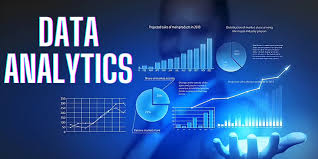
In today’s digital world, every click, swipe, purchase, and interaction generates data. But what do we do with all that data? That’s where data analytics comes in.
Whether you’re a student exploring career options, a professional thinking of switching fields, or just curious, this guide will help you understand what data analytics is, why it’s important, and how it’s shaping the future.
📊 So, What Is Data Analytics?
Data analytics is the process of collecting, cleaning, interpreting, and visualizing data to uncover useful insights and support decision-making.
In simple terms:
Data analytics turns raw data into stories, patterns, and answers.
🧠 Why Is Data Analytics Important?
- Better Decisions: Companies use data to make smarter, faster decisions.
- Cost Savings: Analytics can reveal inefficiencies and reduce waste.
- Customer Understanding: Businesses understand what their customers really want.
- Competitive Edge: In nearly every industry, data-driven organizations perform better.
🔍 Types of Data Analytics
There are four main types (sometimes expanded to five):
- Descriptive Analytics – What happened?
Example: Monthly sales reports. - Diagnostic Analytics – Why did it happen?
Example: Investigating a sudden drop in website traffic. - Predictive Analytics – What might happen?
Example: Forecasting next quarter’s revenue. - Prescriptive Analytics – What should we do next?
Example: Recommending the best pricing strategy. - (Bonus) Cognitive Analytics – Uses AI and machine learning to simulate human thinking.
🛠️ Where Is Data Analytics Used?
Almost every industry uses data analytics:
- Business – Marketing campaigns, sales forecasting, product development
- Healthcare – Diagnosing diseases, patient management
- Finance – Fraud detection, risk analysis
- Sports – Player performance tracking
- Education – Learning progress, course recommendations
👩💻 Who Works in Data Analytics?
Typical job roles include:
- Data Analyst
- Business Intelligence Analyst
- Data Scientist
- Marketing Analyst
- Operations Analyst
Each role involves slightly different tools and goals, but they all use data to drive impact.
📈 Key Skills in Data Analytics
To get started in data analytics, here are some useful skills:
- Excel – for quick data handling
- SQL – to query databases
- Data Visualization – using tools like Power BI or Tableau
- Python or R – for deeper analysis
- Critical Thinking – to interpret results and find meaning
🛤️ How to Learn Data Analytics
You don’t need a degree to break into the field. Many people learn through:
- Online courses (Coursera, Udemy, Google, etc.)
- Certification programs (IBM, Simplilearn, Microsoft)
- Bootcamps and workshops
- Hands-on practice with real-world datasets
📌 Final Thoughts
Data analytics isn’t just a buzzword—it’s the backbone of smart, modern decision-making. As the world keeps generating more data, the need for skilled data professionals will only grow.
Whether you’re helping a business understand its customers or using trends to predict the next big thing, data analytics lets you turn numbers into actionable insights—and that’s a skill worth learning.
